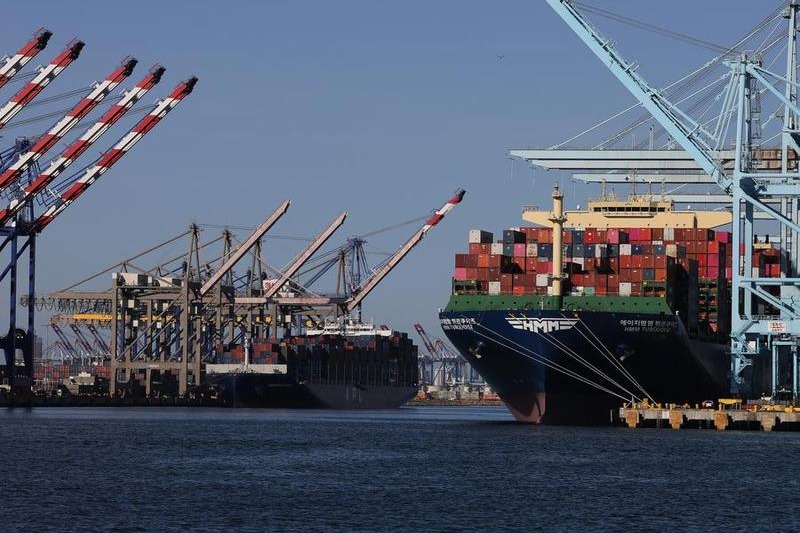China-Central Asia collaboration a necessity


Central Asia is undergoing significant changes. Its population, growing at the rate of about 2 percent a year, has reached 82 million, up 40 percent since 2000, with the combined GDP of the region's five countries touching $519 billion in 2024, an increase of 400 percent since 2000. And in the past four years, the combined GDP of Central Asian countries has grown by 80 percent.
Over the past two decades, Central Asia has maintained an average real annual growth rate of 6.7 percent, compared with the average of 5.3 percent for developing countries and 2.6 percent for the world. Since 2000, the Central Asian countries' foreign trade has increased by almost nine times, while foreign direct investment has increased by 17 times.
Amid these developments, China has consolidated its position as the top trading partner of Central Asian countries, with their total trade volume reaching $94.8 billion in 2024-from $89.4 billion in 2023. Chinese goods and service exports to Central Asia added up to $64.2 billion, making up more than two-thirds of the total trade volume, and Central Asian countries' exports to China amounted to $30.6 billion, primarily comprising oil, natural gas, rare earths, precious metals and minerals. Fruits and other food products were the other significant exports from Central Asia to China.
Kazakhstan was the biggest trading partner of China in Central Asia, with their trade volume reaching $43.8 billion last year, much higher than the $40 billion target set by the two countries for 2030. Kazakhstan was followed by Kyrgyzstan ($22.7 billion), Uzbekistan ($13.8 billion), Turkmenistan ($10.6 billion) and Tajikistan ($3.86 billion).
China's imports from the Central Asian countries have been increasing at a rapid pace. For instance, China's imports from Kyrgyzstan jumped by more than 30 times in 2024, and by more than 60 times in the first two months of this year. And earlier this year, the two governments held discussions on how to increase bilateral trade to $45 billion by 2030, while expeditiously building new checkpoints and increasing the number of flights between the two countries.
Chinese investments are concentrated in the transportation, infrastructure, renewable energy and electric vehicle sectors. For instance, Chinese company BYD started building a large production facility in Uzbekistan last year, a facility that will have a production capacity of 300,000 vehicles a year. In fact, Chinese companies have made substantial investments across the Central Asian countries.
Recent projections by the World Bank and the Asian Development Bank indicate Central Asia will become the fastest-growing economy in Asia, excluding India, with the region expected to continue leading the fastest-growing sub-region this year and the next. According to the ADB's forecast on April 2, this year's growth projection for East Asia is 4.4 percent, India 6.7 percent, Southeast Asia 4.7 percent, the Pacific 3.9 percent, and Central Asia 5.4 percent. And the World Bank's 2025 growth projection for Kazakhstan is 4.5 percent, Kyrgyzstan 6.8 percent, Tajikistan 6.5 percent, and Uzbekistan 5.9 percent.
But do the five Central Asian countries have a distinct growth model? Do they share common development characteristics? How have these traits of the countries contributed to the overall region's growth? And can their similarities be seen as a unique pattern that sets them apart from the growth trajectories of other parts of the world?
The Central Asian region's growth stems from economic liberalization, reduced barriers to foreign direct investment, an emphasis on digitalization, and investments in productivity-boosting infrastructure, along with favorable demographics and an increasingly young and educated population. While the region faces challenges such as heavy reliance on hydrocarbon and commodity exports, the growing significance of rare earths, and certain minerals and elements in the shift to renewable energy somewhat mitigates the issue. These factors have enhanced the region's economic prospects and stability.
The Central Asian nations have reached a consensus that fostering a workforce of specialists and skilled people, and creating new jobs will help improve the living standards of people throughout the region. Central Asia's young and increasing population is becoming more integrated into the global economy, with the entrepreneurial spirit of the youth likely to attract investment aimed at diversifying sectors and enabling the region to climb up the global value chains.
Both foreign and domestic investors have been channeling funds into knowledge-intensive sectors, such as high technology, renewable energy, transport and agro-processing.
Acknowledging the critical role of human capital development, countries in the region are making significant investments in these fields. For instance, Kazakhstan's Bolashak program is creating opportunities for youths to study abroad while ensuring most of them return home, building a pool of world-class professionals.
Kyrgyzstan and Uzbekistan, on their part, have established partnerships with various foreign universities in the region. This shows the Central Asian countries have the potential to strengthen cooperation in new technologies, the digital economy, and high-quality development. The China-Central Asia Summit in Kazakhstan will undoubtedly strengthen the strategic partnership among these countries.
The author, former prime minister of the Kyrgyz Republic, is a professor at the Belt and Road School of Beijing Normal University. The views don't necessarily reflect those of China Daily.
If you have a specific expertise, or would like to share your thought about our stories, then send us your writings at opinion@chinadaily.com.cn, and comment@chinadaily.com.cn.

































